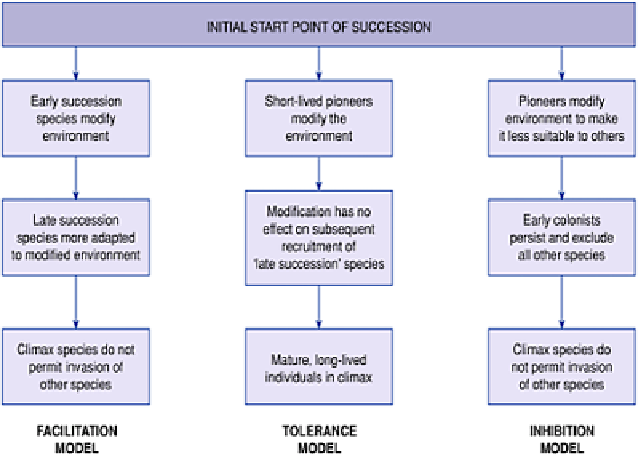Environmental Engineering Reference
In-Depth Information
Figure 21.4
Modern views of plant succession according to
the facilitation model, the tolerance model and the inhibition
model.
than was first envisaged by Clements. There are some elements of orderliness and
predictability, but there are also elements of apparent disorderliness and unpredictability
due to factors of habitat variability, propagule availability and replacement by pure
chance (randomness). Successions appear to be less 'directional' than in the classical
model. Initial sites are usually very variable, and the availability of propagules to
colonize and replace can differ between sites. Also external environmental fluctuations
can occur through the course of a succession. In the matter of competition between a
wide range of species combinations it may be very difficult to predict an outcome; the
element of chance enters the process of species replacement. The importance of these
plant factors gives rise to what are termed
allogenic successions
(externally induced
successions), which contrast with
autogenic successions
(self-induced successions),
where distinct seral changes result from autogenic habitat modification.
The question of differences between species in seed dispersal, germination rates,
growth rates and longevity is important in studying successions. Pioneer species and
early successional plants are usually short-lived 'r species' producing many easily
dispersed seeds which have long viability and are capable of dispersal over long
distances. The shade tolerance of these plants is low, and growth rates are rapid. By
contrast late successional plants are long-lived 'k species' with slow growth rates, large
size and high shade tolerance. Their seeds are also large, of short viability and capable of
dispersal for only a short distance.

